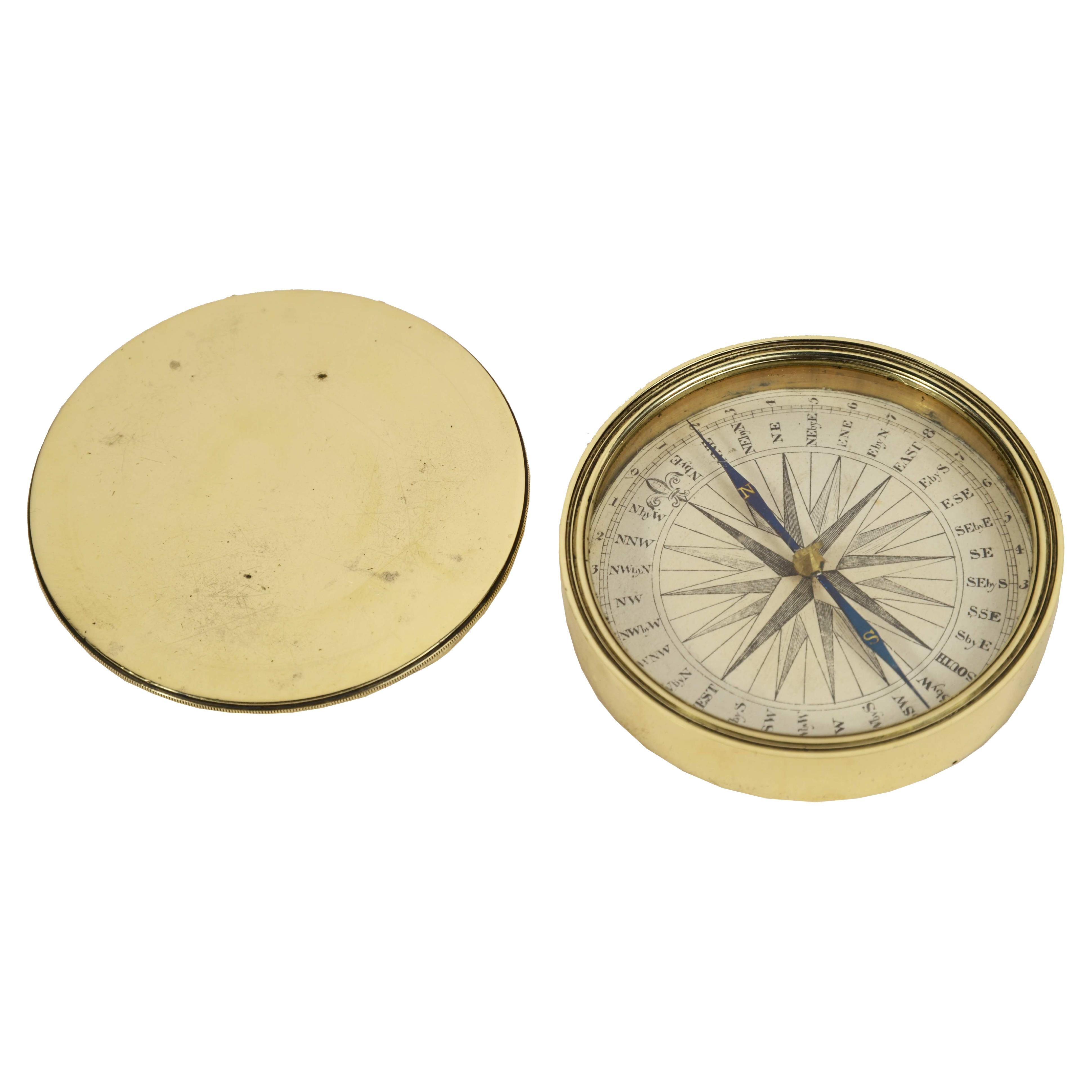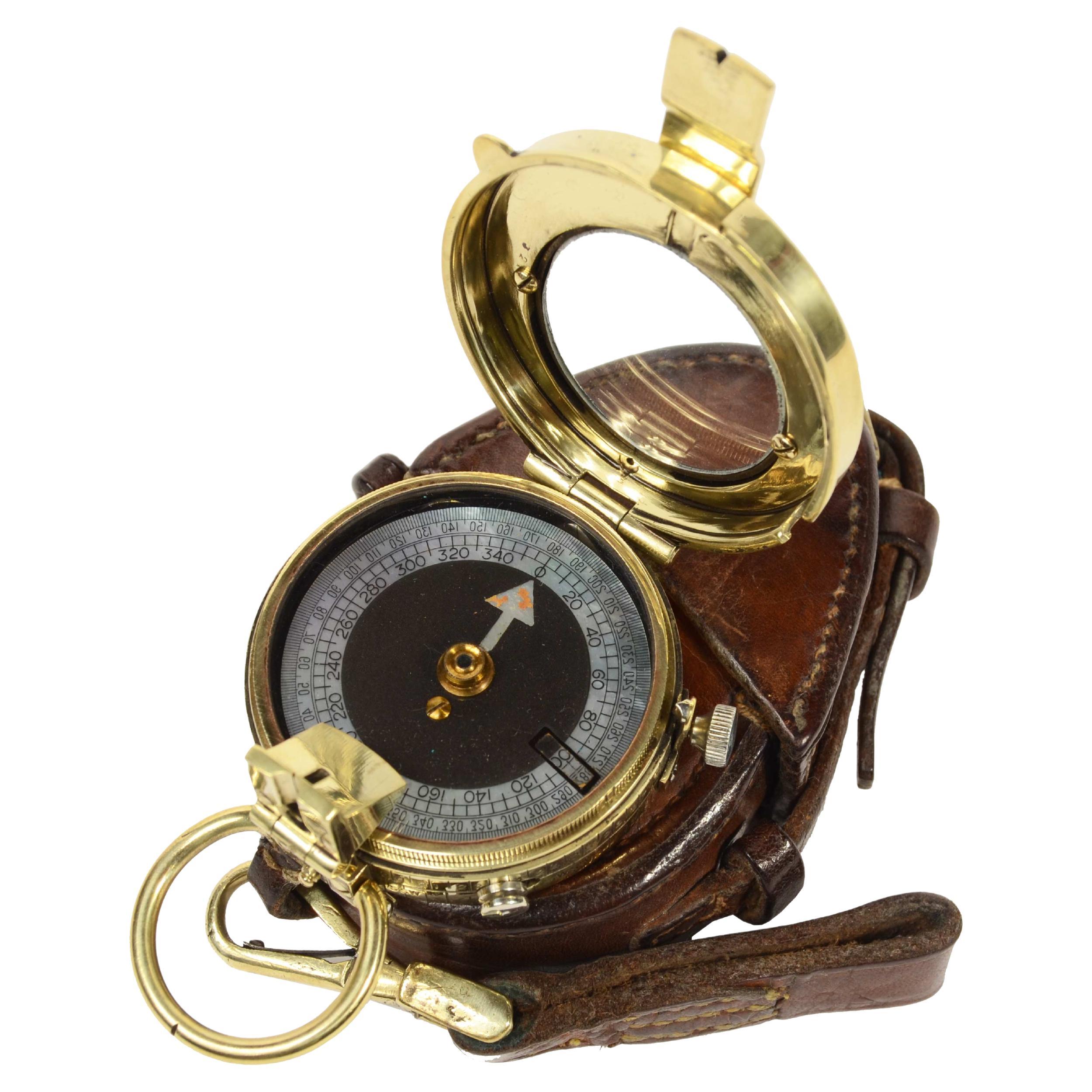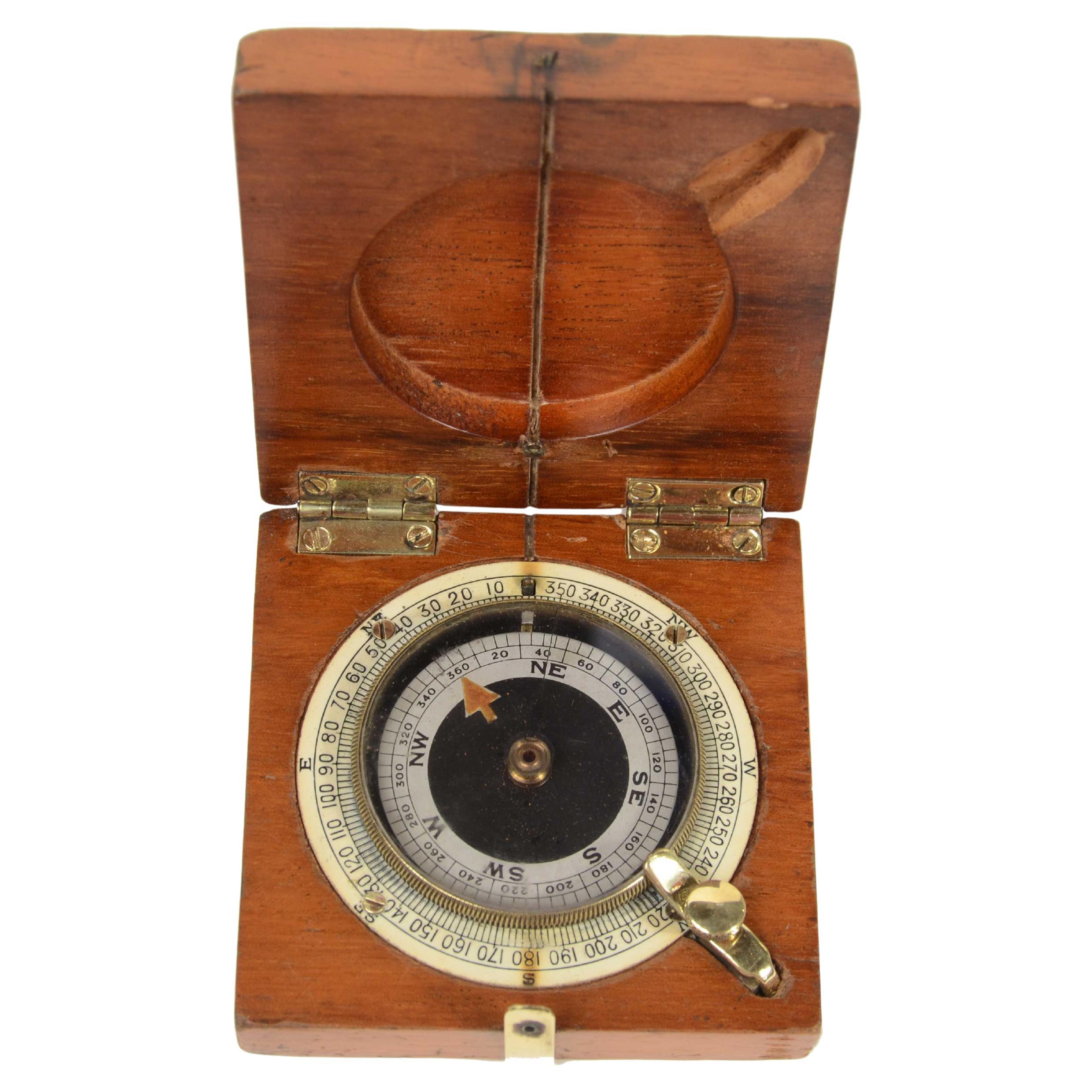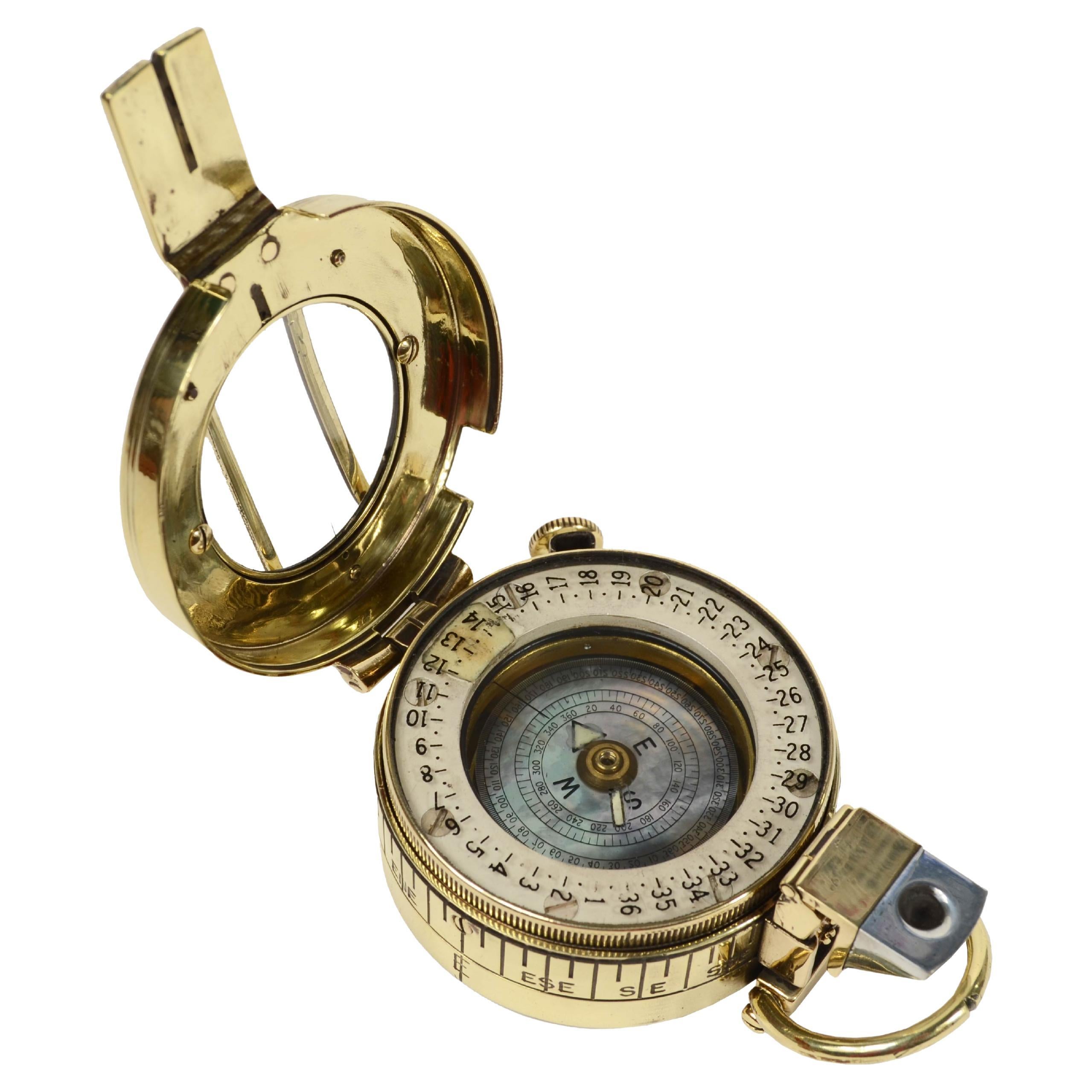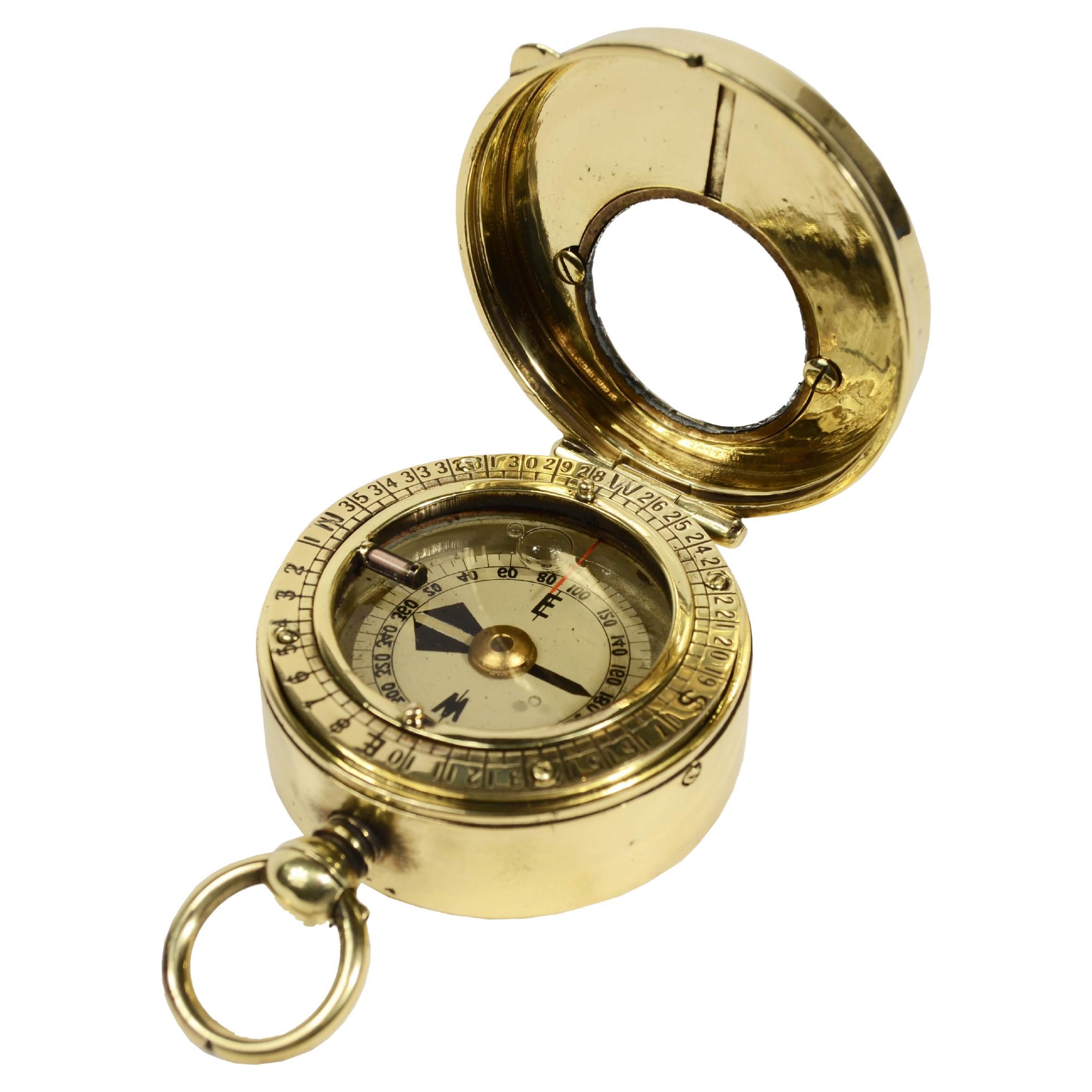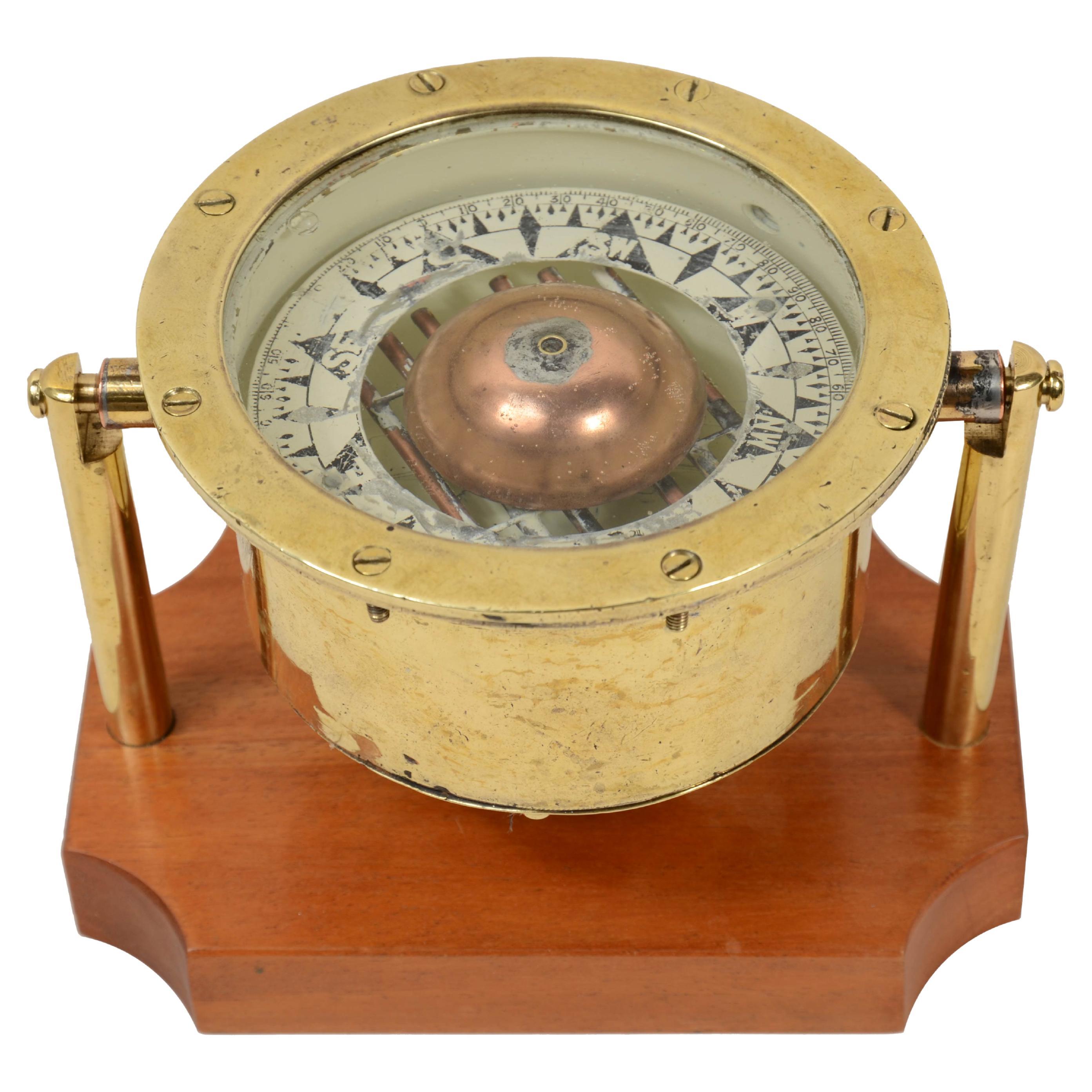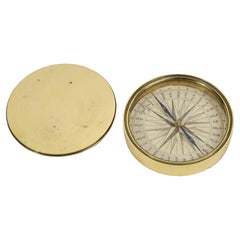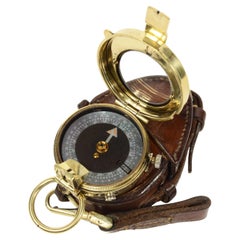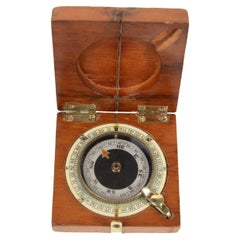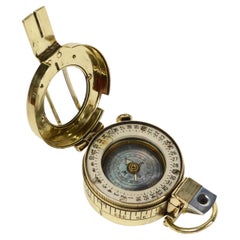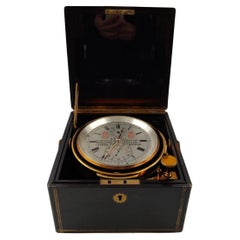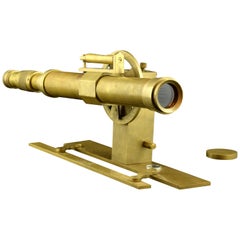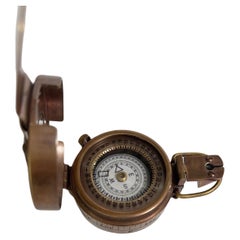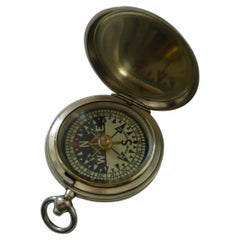Items Similar to Small chrome-plated brass pocket compass for the U.S. Army in 1917
Want more images or videos?
Request additional images or videos from the seller
1 of 10
Small chrome-plated brass pocket compass for the U.S. Army in 1917
$889.33
£668.37
€750
CA$1,245.46
A$1,365.88
CHF 707.67
MX$16,412.17
NOK 8,908.26
SEK 8,360.65
DKK 5,715.26
About the Item
Small chrome-plated brass pocket and travel compass, issued to the U.S. Army during World War I; cover reads ENG. DEPT. U.S.A. 1917.
Pocket compass in the shape of an onion clock, equipped with a lid that opens with a button located inside the ring; when the lid is closed, a mechanism is operated that blocks the needle to shelter it from movement.
The instrument consists of a magnetized needle free to rotate in a horizontal plane marking the direction of magnetic north.
Signed Usanite N.Y. Taylor Rochester Pat Apr 20-1915.
Good condition, signs of use, slight oxidation inside the compass fully functional. Measures cm 4.5x1.2 - inches 1.8x0.4.
The last photo is the gift box.
The Usanite model was supplied to the U.S. Army Engineering Department as a pocket compass during World War I.
It seems that the etymology of the name Usanite originated from Use at night, to be used at night, as if the compass had the characteristics for nighttime use.
Taylor Instrument began operations in Rochester in 1851, producing thermometers; in 1900 it acquired the English company Short & Mason famous for its precision instruments.
The Greeks and the Romans were still unaware of the possibility of harnessing magnetic fields for orientation, while it seems that this possibility was already somewhat known to the Chinese: around 2600 B.C. Emperor Hoang-Ti was able to overcome Prince Tchi-Yeou in battle thanks to a "magic" chariot, the See-Nan (chariot pointing south). The emperor, thanks to this device, identified the enemy's escape route, despite the fact that the enemy had concealed it through a blanket of smoke: fixed on the chariot was a human-shaped wooden silhouette that rotated on itself and, with its arm outstretched, always pointed south (pointing south of course was also pointing north at the same time, but south was considered by the Chinese to be the most important cardinal point). The Chinese also used their discoveries related to magnetic fields as a form of entertainment and spectacle: they would throw magnetized arrows as if they were dice, and these would line up in a south-north direction as if by magic, which greatly impressed and amazed the spectators.
- Dimensions:Height: 0.4 in (1.02 cm)Diameter: 1.8 in (4.58 cm)
- Materials and Techniques:
- Period:1910-1919
- Date of Manufacture:1917
- Condition:Wear consistent with age and use.
- Seller Location:Milan, IT
- Reference Number:1stDibs: LU1020246924812
About the Seller
5.0
Vetted Professional Seller
Every seller passes strict standards for authenticity and reliability
Established in 1999
1stDibs seller since 2014
400 sales on 1stDibs
Typical response time: 2 hours
- ShippingRetrieving quote...Shipping from: Milan, Italy
- Return Policy
Authenticity Guarantee
In the unlikely event there’s an issue with an item’s authenticity, contact us within 1 year for a full refund. DetailsMoney-Back Guarantee
If your item is not as described, is damaged in transit, or does not arrive, contact us within 7 days for a full refund. Details24-Hour Cancellation
You have a 24-hour grace period in which to reconsider your purchase, with no questions asked.Vetted Professional Sellers
Our world-class sellers must adhere to strict standards for service and quality, maintaining the integrity of our listings.Price-Match Guarantee
If you find that a seller listed the same item for a lower price elsewhere, we’ll match it.Trusted Global Delivery
Our best-in-class carrier network provides specialized shipping options worldwide, including custom delivery.More From This Seller
View AllTraveler's pocket compass, Victorian-era turned brass
Located in Milan, IT
Traveler's pocket compass, Victorian-era turned brass, late 19th century England, rose on sixteen-twenty copperplate engraving paper complete with goniometric circle.
Conservation s...
Category
Antique 1890s Scientific Instruments
Materials
Brass
Prismatic brass compass leather case signed E. Koehn Geneve Suisse 1917
Located in Milan, IT
Brass prismatic surveying compass; this is a small compass, signed E. Koehn Geneve Suisse No. 58611, Verner's Pattern VII after the name of the designer, Colonel William Willoughby C...
Category
Vintage 1910s Scientific Instruments
Materials
Brass
Small mahogany and brass compass in use by British aviation officers 1915
Located in Milan, IT
Small mahogany wood and brass pocket compass in use by British aviation officers during World War I complete with eight-wind rose with goniometric circle and compass needle block for...
Category
Vintage 1910s Aviation Objects
Materials
Wood
Prismatic surveying compass signed T.G. Co Ltd London no. B267870 1944 MK
Located in Milan, IT
Prismatic surveying compass signed T.G. Co Ltd London no. B267870 1944 MK III, in use by British army officers during World War II. This is a small vintage compass typically used in...
Category
Vintage 1940s Scientific Instruments
Materials
Brass
8253 Sinclair Haymarket London Signature Liquid Sensing Pocket Compass
Located in Milan, IT
Signed Sinclair Haymarket London liquid-detecting pocket compass in use by British army officers during World War I. This is a small vintage compass typically used in recreational sa...
Category
Vintage 1910s Nautical Objects
Materials
Brass
Bussola a liquido su giunto cardanico e montata su tavola di legno di mogano
Located in Milan, IT
Bussola a liquido su giunto cardanico e montata su tavola di legno di mogano sagomata. Manifattura inglese della fine del XIX sec. La bussola è costituita da un recipiente di forma c...
Category
Antique Late 19th Century Nautical Objects
Materials
Brass
You May Also Like
Cronometro da marina, SEWILL, Inghilterra fine XIX secolo
By Sewill & Liverpool
Located in Vicenza, VI
Cronometro da marina prodotto da Sewill, custodito in una cassa cubica in legno di palissandro, con spigoli e filettature in ottone, di dimensioni 18x18x19 cm. È dotato di due coperc...
Category
Antique Late 19th Century English Other Nautical Objects
Materials
Brass
Decorative Alidade, Metal, 20th Century
Located in Madrid, ES
It has a cover to protect the lens made of the same gold metal in which the rest of the instrument is made. The lines, pure and clean, are the protagonists, and make it a great opti...
Category
20th Century Unknown Other Scientific Instruments
Materials
Metal, Other
Old Compass reproduction 1944 London, brown Color
Located in Auribeau sur Siagne, FR
Old Compass reproduction 1944 London, brown Color
Category
20th Century English Scientific Instruments
Materials
Metal
$132 Sale Price
20% Off
Antique English Nickel Cased Compass Reg. No. For 1903 - WW1 Military Issue
Located in Bath, GB
A handsome cased World War One issued compass with hinged lid, the little button on the top used to open; just like a full hunter pocket watch. The front is stamped with the war off...
Category
Vintage 1910s Scientific Instruments
Materials
Nickel
Antique chest safe from the 17th century
Located in Cesena, FC
Antique chest safe from the 17th century, made of wrought iron.
Antique wrought iron safe chest from 1600, studded, with working mechanism
For key insertion there is a dungeon mecha...
Category
Antique 18th Century and Earlier Italian Trunks and Luggage
Materials
Iron
Antique Surveyor's Circumcompendium Signed Brand Frères, 1850-1880
Located in Bilzen, BE
"Antique Surveyor's Circumcompendium Signed Brand Frères, 1850-1880"
Description: Antique Surveying Circumferentor by Brand Frères
Brand Frères, Optic...
Category
Antique Mid-19th Century Belgian Other Scientific Instruments
Materials
Brass
